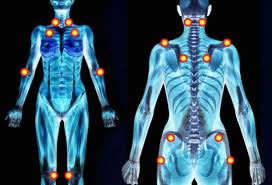 After intestinal absorption and cutaneous production, vitamin D3 is transported to the liver where it undergoes initial processing (hydroxylation), the second takes place in the kidneys releasing the active form 1, 25-hydroxyvitamin D3. This hormone reaches the nucleus of target cells and regulates the expression of many genes.
After intestinal absorption and cutaneous production, vitamin D3 is transported to the liver where it undergoes initial processing (hydroxylation), the second takes place in the kidneys releasing the active form 1, 25-hydroxyvitamin D3. This hormone reaches the nucleus of target cells and regulates the expression of many genes.
Food containing vitamin D
Food containing the most amount of vitamin D are essentially: halibut, tuna, salmon, herring, anchovies, sardines and mackerel.
Optimal values of vitamin D
Adult values of serum 25-OH vitamin D should be ranged between 30 pg / ml and 100 to 150 pg / ml. A daily dose of 10,000 IU in addition to adequate food intake does not cause side effects (no hypercalcemia).
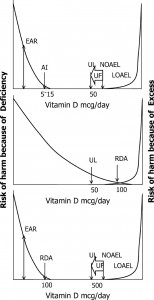 Upper figure. Representation of nutritional vitamin D amount by Yates et al. The abbreviations represent: EAR; estimated average requirement for vitamin D, AI; adequate intake, UL; upper limit (calculated by dividing NOAEL/ UF), NOAEL; no observed adverse effect level, UF; uncertainty factor, LOAEL; lowest observed adverse level. Middle figure. This graph illustrates a hypothetical situation by combining the upper limit values (UL) with needs assessment vitamin D in adulthood estimated by the data published in 2006. Bottom figure. Represents what the author proposes may be the accepted reality for vitamin D in the future, based on an RDA that reflects the vitamin D supply according to data on the tolerance dose without side effects.
Upper figure. Representation of nutritional vitamin D amount by Yates et al. The abbreviations represent: EAR; estimated average requirement for vitamin D, AI; adequate intake, UL; upper limit (calculated by dividing NOAEL/ UF), NOAEL; no observed adverse effect level, UF; uncertainty factor, LOAEL; lowest observed adverse level. Middle figure. This graph illustrates a hypothetical situation by combining the upper limit values (UL) with needs assessment vitamin D in adulthood estimated by the data published in 2006. Bottom figure. Represents what the author proposes may be the accepted reality for vitamin D in the future, based on an RDA that reflects the vitamin D supply according to data on the tolerance dose without side effects.
No toxic effects were encountered at concentrations <140 nmol / L, which corresponds to vitamin D intake of 250 microg (10000 IU) / d. Published cases of hypercalcemia due to overdosage of vitamin D involves a daily intake of 25 (OH) vitamin D> or = 1000 microg (40000 IU) / d.
Vitamine D toxicity
Levels up to 100 ng/mL are often seen in individuals with outdoor occupations receiving intense sun exposure without ill effects
Vitamin D intoxication with renal stones and hypercalcemia may be observed when serum levels of 25(OH)D are greater than 150 ng/mL (374 nmol/L). (80)
Roles of vitamin D
1. Keeping blood level of calcium
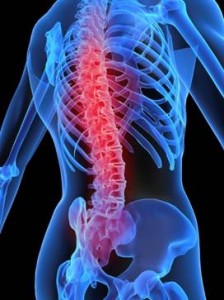 The role of vitamin D is to maintain blood levels of calcium in the norms in order to preserve cellular functions. 1,25 (OH) 2 vitamin D maintains serum calcium in promoting intestinal calcium absorption and ensures the mobilization and release of calcium stored in bone tissue. Deficiency in vitamin D and / or calcium can lead to a defective bone mineralization which may be responsible for tuberculosis, osteomalacia, osteopenia and osteoporosis.
The role of vitamin D is to maintain blood levels of calcium in the norms in order to preserve cellular functions. 1,25 (OH) 2 vitamin D maintains serum calcium in promoting intestinal calcium absorption and ensures the mobilization and release of calcium stored in bone tissue. Deficiency in vitamin D and / or calcium can lead to a defective bone mineralization which may be responsible for tuberculosis, osteomalacia, osteopenia and osteoporosis.
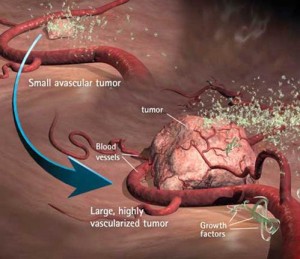 Vitamin D plays an important role in reducing the risk of breast, colon and ovarian cancer as well as lymphomas of Hodgkin and brain cancers. Vitamin D acts on the tumor microenvironment inhibiting cell proliferation and the formation of new blood vessels (angiogenesis) needed for the growth of the tumor and its spread throughout the body. Vitamin D also induces tumor cell death (apoptosis). The most likely explanation of this effect is related to the antitumor fact that the 1, 25-OH vitamin D control directly and indirectly many genes important for cell cycle, cell differentiation, angiogenesis and apoptosis.
Vitamin D plays an important role in reducing the risk of breast, colon and ovarian cancer as well as lymphomas of Hodgkin and brain cancers. Vitamin D acts on the tumor microenvironment inhibiting cell proliferation and the formation of new blood vessels (angiogenesis) needed for the growth of the tumor and its spread throughout the body. Vitamin D also induces tumor cell death (apoptosis). The most likely explanation of this effect is related to the antitumor fact that the 1, 25-OH vitamin D control directly and indirectly many genes important for cell cycle, cell differentiation, angiogenesis and apoptosis.
Vitamin D and cancer risk. A large study published in 2007 showed a reduced risk of developing cancer by 75% among those who received supplementation with 1200 IU of vitamin D3 per day.
Vitamin D and breast cancer. A study of 1,760 people showed that levels of 52 ng / ml 25-OH Vitamin D reduces by 50% the risk of breast cancer compared to those who had serum levels less than 13 ng / ml. These serum values correspond to a daily intake of 4000 IU.
Vitamin D and colorectal cancer. Patients with serum 25-OH vitamin D less than 30 pg / mL were approximately twice as likely to develop colon cancer compared to those with higher rates.
Vitamin D and prostate cancer. A study of 19 000 patients during 13 years reveals that patients with plasma levels below 40 pmol / l at inclusion in the study had a 70% risk of developing prostate cancer compared to those who had higher rates. Regarding patients under 52 years the risk was increased by 250% and the risk of developing metastasis was multiplied by 6.3.
Vitamin D and bladder cancer. A study in Finland shows that male smokers whose vitamin D levels in the blood was less than 25 nanomoles per liter had an increased risk of bladder cancer, estimated at 73% compared to participants whose levels were higher to 50 nanomoles per liter.
6. Vitamin D and muscle mass
 The vitamin D status is positively associated with muscle strength and physical performance and inversely correlated with the risk of falls. Supplementation of 800 IU of vitamin D administered for 5 months to 124 long-term residents of a nursing home decreased by 72% the risk of falling.
The vitamin D status is positively associated with muscle strength and physical performance and inversely correlated with the risk of falls. Supplementation of 800 IU of vitamin D administered for 5 months to 124 long-term residents of a nursing home decreased by 72% the risk of falling.
Serum 25-OH vitamin D are inversely related to body fat muscle. Vitamin D deficiency is associated with an infiltration of muscle by adipose tissue in healthy young women.
The rate of 25-OH vitamin D postpubaires girls 16 to 22 years is directly correlated to the size.
7. Vitamin D and cardiovascular disease
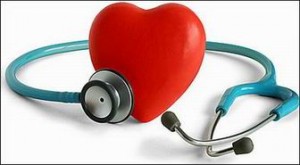 Inadequate daily intakes of vitamin D3 actively contribute to the installation and progression of hypertension and cardiovascular diseases particularly among elderly patients with hypovitaminosis D and secondary hyperparathyroidism.
Inadequate daily intakes of vitamin D3 actively contribute to the installation and progression of hypertension and cardiovascular diseases particularly among elderly patients with hypovitaminosis D and secondary hyperparathyroidism.
8. Vitamin D and brain
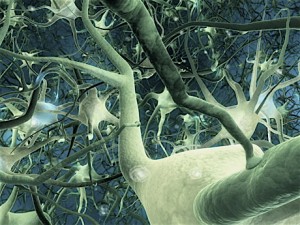 Several mechanisms bind vitamin D to brain development as well as brain function. The brain expression of many genes is affected by treatment with vitamin D. A vitamin D deficiency may be associated with behaviour disorders such as schizophrenia, depression, certain types of dementia (eg Alzheimer’s disease), Parkinson’s disease, a lack of vitamin D can affect learning and memorization.
Several mechanisms bind vitamin D to brain development as well as brain function. The brain expression of many genes is affected by treatment with vitamin D. A vitamin D deficiency may be associated with behaviour disorders such as schizophrenia, depression, certain types of dementia (eg Alzheimer’s disease), Parkinson’s disease, a lack of vitamin D can affect learning and memorization.
9. Vitamine D and aging clock
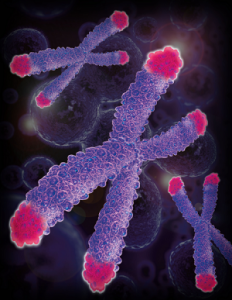 Vitamin D is a potent inhibitor of the proinflammatory response and thereby diminishes turnover of leukocytes (white blood cells). Leukocyte telomere length (LTL) is a predictor of aging-related disease and decreases with each cell cycle and increased inflammation.
Vitamin D is a potent inhibitor of the proinflammatory response and thereby diminishes turnover of leukocytes (white blood cells). Leukocyte telomere length (LTL) is a predictor of aging-related disease and decreases with each cell cycle and increased inflammation.
Higher vitamin D concentrations, which are easily modifiable through nutritional supplementation, are associated with longer LTL, which underscores the potentially beneficial effects of this hormone on aging and age-related diseases.
Bibliographie
•(1)The Effect of Calcipotriol on the Expression of Human β Defensin-2 and LL-37 in Cultured Human Keratinocytes. Beom Joon Kim,1 Yong Kwan Rho,1 Hye In Lee,1 Mi Sook Jeong,2 Kapsok Li,1 Seong Jun Seo,1* Myeung Nam Kim,1 and Chang Kwun Hong1. Clin Dev Immunol. 2009; 2009: 645898
•(2)The Vitamin D-Antimicrobial Peptide Pathway and Its Role in Protection Against Infection: Vitamin D, TB & Other Infectious Diseases. Adrian F Gombart. Future Microbiology. 2009;4(9):1151-1165
•(3)Human cathelicidin antimicrobial peptide (CAMP) gene is a direct target of the vitamin D receptor and is strongly up-regulated in myeloid cells by 1,25-dihydroxyvitamin D3. Adrian F. Gombart*,1, Niels Borregaard and H. Phillip Koeffler*. The FASEB Journal. 2005;19:1067-1077
•(4)Toll-like receptor triggering of a vitamin D-mediated human antimicrobial response. Liu PT, Stenger S, Li H et al.: Science 311(5768), 1770–1773 (2006).
•(5)Maternal Vitamin D Deficiency Is Associated with Bacterial Vaginosis in the First Trimester of Pregnancy. Lisa M. Bodnar, Marijane A. Krohn and Hyagriv N. Simhan. Journal of Nutrition, Vol. 139, No. 6, 1157-1161, June 2009.
•(6)A Single Dose of Vitamin D Enhances Immunity to Mycobacteria. Adrian R. Martineau, Robert J. Wilkinson, Katalin A. Wilkinson, Sandra M. Newton, Beate Kampmann, Bridget M. Hall1, Geoffrey E. Packe, Robert N. Davidson, Sandra M. Eldridge, Zoë J. Maunsell6, Sandra J. Rainbow6, Jacqueline L. Berry and Christopher J. Griffiths. American Journal of Respiratory and Critical Care Medicine Vol 176. pp. 208-213, (2007)
•(7)Influence of vitamin D deficiency and vitamin D receptor polymorphisms on tuberculosis among Gujarati Asians in west London: a case-control study. Robert J. Wilkinson, Martin. Llewelyn, Zahra. Toossi, Punita. Patel, Geoffrey. Pasvol, Ajit. Lalvani, Dennis. Wright, Mohammed. Latif, Robert N. Davidson The Lancet, Volume 355, Issue 9204, Pages 618-621
•(8)Vitamin D critical to human TB response. Findings illuminate possible prevention pathways. By Alvin Powell. Harvard News Office. Harvard Gazette March 09, 2006.
•(9)Cutting Edge: Vitamin D-Mediated Human Antimicrobial Activity against Mycobacterium tuberculosis Is Dependent on the Induction of Cathelicidin1. Philip T. Liu, Steffen Stenger , Dominic H. Tang* and Robert L. Modlin. The Journal of Immunology, 2007, 179, 2060 -2063.
•(10)IFN- – and TNF-Independent Vitamin D-Inducible Human Suppression of Mycobacteria: The Role of Cathelicidin LL-37. Adrian R. Martineau, Katalin A. Wilkinson, Sandra M. Newton, R. Andres Floto, Anthony W. Norman, Keira Skolimowska, Robert N. Davidson, Ole E. Sørensen, Beate Kampmann, Christopher J. Griffiths and Robert J. Wilkinson. The Journal of Immunology, 2007, 178, 7190 -7198
•(11)DNA transportation authority. Delphine J Lee & Robert L Modlin. Nature Medicine14, 1319 – 1320 (2008)
•(12)Fighting infections with vitamin D. Michael Zasloff. Nature Medicine 12, 388 – 390 (2006)
•(13)Alterations in vitamin D status and anti-microbial peptide levels in patients in the intensive care unit with sepsis. Leo Jeng, Alexandra V Yamshchikov, Suzanne E Judd, Henry M Blumberg, Gregory S Martin, Thomas R Ziegler, and Vin Tangpricha. J Transl Med. 2009; 7: 28.
•(14) Multiple sclerosis and vitamin D: an update. B M VanAmerongen, C D Dijkstra, P Lips and C H Polman. European Journal of Clinical Nutrition (2004) 58, 1095–1109.
•(15) Vitamin D intake is inversely associated with rheumatoid arthritis: Results from the Iowa Women’s Health Study. Linda A. Merlino, Jeffrey Curtis, Ted R. Mikuls, James R. Cerhan, Lindsey A. Criswell, Kenneth G. Saag. Arthritis & Rheumatism. Vol. 50, No. 1, January 2004, pp 72–77.
•(16) Vitamin D and diabetes. Takiishi T, Gysemans C, Bouillon R., Mathieu C. Endocrinol Metab Clin North Am. 2010 Jun;39(2):419-46.
•(17) Mechanisms of disease: vitamin D and inflammatory bowel disease. Lim WC, Hanauer SB, Li YC. Nat Clin Pract Gastroenterol Hepatol. 2005 Jul;2(7):308-15.
•(18) Vitamin D in Systemic Lupus Erythematosus. Diane Kamen; Cynthia Aranow. Curr Opin Rheumatol. 2008;20(5):532-537.
•(19) Am J Clin Nutr. 2004 Dec;80(6 Suppl):1717S-20S. Vitamin D status, 1,25-dihydroxyvitamin D3, and the immune system. Cantorna MT, Zhu Y, Froicu M, Wittke A.
•(20)25 (OH) vitamin D level in Crohn’s disease: association with sun exposure & disease activity. Joseph AJ, George B, Pulimood AB, Seshadri MS, Chacko A. Indian J Med Res. 2009 Aug;130(2):133-7.
•(21) Place de la vitamine D, du sevelamer et du cinacalcet dans la prise en charge des patients en insuffisance rénale. O. Bonny M. Burnier. Revue Médicale Suisse N° 147 publiée le 05/03/2008
•(22) Chemoprevention of colon cancer by calcium, vitamin D and folate: molecular mechanisms. Sergio A. Lamprecht & Martin Lipkin. Nature Reviews Cancer 3, 601-614 (August 2003).
•(23) New analogs of vitamin D3. Eduardo Slatopolsky, Adriana Dusso and Alex Brown. Kidney International (1999) 56, S46–S51
•(24) Vitamin D status and arterial hypertension: a systematic review. Stefan Pilz, Andreas Tomaschitz, Eberhard Ritz & Thomas R. Pieber. Nature Reviews Cardiology 6, 621-630 (October 2009)
•(25) Vitamin D signalling pathways in cancer: potential for anticancer therapeutics. Kristin K. Deeb, Donald L. Trump & Candace S. Johnson. Nature Reviews Cancer 7, 684-700 (September 2007)
•(26) Vitamin D receptor: Mechanisms for vitamin D resistance in renal failure. Adriana S Dusso. Kidney International (2003) 63, S6–S9
•(27)Chemoprevention of colon cancer by calcium, vitamin D and folate: molecular mechanisms. Sergio A. Lamprecht & Martin Lipkin. Nature Reviews Cancer 3, 601-614 (August 2003)
•(28)Vitamin D3 from sunlight may improve the prognosis of breast-, colon- and prostate cancer (Norway). Robsahm TE, Tretli S, Dahlback A, Moan J. Cancer Causes Control. 2004 Mar;15(2):149-58
•(29) Does sunlight have a beneficial influence on certain cancers? Kricker A, Armstrong B. Prog Biophys Mol Biol. 2006 Sep;92(1):132-9. Epub 2006 Feb 28
•(30) Vitamin D signalling pathways in cancer: potential for anticancer therapeutics. Kristin K. Deeb , Donald L. Trump & Candace S. Johnson. Nature Reviews Cancer 7, 684–700 (1 September 2007)
•(31) Commuting the death sentence: how oocytes strive to survive. Jonathan L. Tilly. Nature Reviews Molecular Cell Biology 2, 838-848 (November 2001)
•(32) Vitamin D3 metabolites regulate LTBP1 and latent TGF-beta1 expression and latent TGF-beta1 incorporation in the extracellular matrix of chondrocytes. Pedrozo HA, Schwartz Z, Mokeyev T, Ornoy A, Xin-Sheng W, Bonewald LF, Dean DD, Boyan BD. J Cell Biochem. 1999 Jan 1;72(1):151-65.
•(33) Development of TGF-β signalling inhibitors for cancer therapy. Jonathan M. Yingling, Kerry L. Blanchard & J. Scott Sawyer. Nature Reviews Drug Discovery 3, 1011-1022 (December 2004)
•(34) WNT and β-catenin signalling: diseases and therapies. Randall T. Moon, Aimee D. Kohn, Giancarlo V. De Ferrari & Ajamete Kaykas. Nature Reviews Genetics 5, 691-701 (September 2004)
•(35) Vitamin D and calcium supplementation reduces cancer risk: results of a randomized trial. Lappe JM, Travers-Gustafson K, Davies KM, Recker RR, Heaney RP. American Journal of Clinical Nutrirtion 2007;85:1586-91.
•(36) Vitamin D and Calcium in the Prevention of Prostate and Colon Cancer: New Approaches for the Identification of Needs. Myron D. Gross. The American Society for Nutritional SciencesJ. Nutr. 135:326-331, February 2005
•(37) Vitamin D and prevention of breast cancer: pooled analysis. Garland CF, Gorham ED, Mohr SB, Grant WB, Giovannucci EL, Lipkin M, Newmark H, Holick MF, Garland FC. J Steroid Biochem Mol Biol. 2007 Mar;103(3-5):708-11.
•(38) Vitamin D for cancer prevention: global perspective. Garland CF, Gorham ED, Mohr SB, Garland FC. Ann Epidemiol. 2009 Jul;19(7):468-83.
•(39) Vitamin D and cancer mini-symposium: the risk of additional vitamin D. Vieth R. Ann Epidemiol. 2009 Jul;19(7):441-5. Epub 2009 Apr 11.
•(40) Safety of vitamin D3 in adults with multiple sclerosis. Kimball SM, Ursell MR, O’Connor P, Vieth R. Am J Clin Nutr. 2007 Sep;86(3):645-51.
•(41) Critique of the Considerations for Establishing the Tolerable Upper Intake Level for Vitamin D: Critical Need for Revision Upwards. Reinhold Vieth. J. Nutr. 136:1117-1122, April 2006
•(42) Risk assessment for vitamin D. John N Hathcock, Andrew Shao, Reinhold Vieth and Robert Heaney. Am J Clin Nutr. 2007 Jan;85(1):6-18.
•(43) Plasma Vitamin D Metabolites and Risk of Colorectal Cancer in Women. Diane Feskanich, Jing Ma, Charles S. Fuchs, Gregory J. Kirkner, Susan E.Hankinson, Bruce W. Hollis,5 and Edward L. Giovannucci. Cancer Epidemiol Biomarkers Prev 2004;13(9). September 2004
•(44) The Role of Vitamin D in Cancer Prevention. Cedric F. Garland, DrPH, Frank C. Garland, PhD, Edward D. Gorham, PhD, MPH, Martin Lipkin, MD, Harold Newmark, ScD, Sharif B. Mohr, MPH and Michael F. Holick, MD, PhD. American Journal of Public Health : February 2006, Vol 96, No. 2 252-261
•(45) Serum Vitamin D and Risk of Bladder Cancer. Mondul, A.M. et al. Cancer Research 70, 9218 -9223 (2010)
•(46) Low Vitamin D and High Parathyroid Hormone Levels as Determinants of Loss of Muscle Strength and Muscle Mass (Sarcopenia): The Longitudinal Aging Study Amsterdam. Marjolein Visser, Dorly J. H. Deeg and Paul Lips. The Journal of Clinical Endocrinology & Metabolism 2003. Vol. 88, No. 12 5766-5772
•(47) Vitamin D Status and Its Relation to Muscle Mass and Muscle Fat in Young Women. Vicente Gilsanz, Arye Kremer, Ashley O. Mo, Tishya A. L. Wren and Richard Kremer. The Journal of Clinical Endocrinology & Metabolism, 2010. Vol. 95, No. 4 1595-1601
•(48) Vitamin D Status and Its Relation to Muscle Mass and Muscle Fat in Young Women. Vicente Gilsanz, Arye Kremer, Ashley O. Mo, Tishya A. L. Wren and Richard Kremer. The Journal of Clinical Endocrinology & Metabolism, 2010. Vol. 95, No. 4 1595-1601
•(49) The vitamin D receptor gene variant and physical activity predicts fasting glucose levels in healthy young men. ORTLEPP J. R. ; METRIKAT J. ; ALBRECHT M. ; VON KORFF A. ; HANRATH P. ; HOFFMANN R. Blackwell, Oxford, ROYAUME-UNI (1984) (Revue)
•(50) Role of vitamin D in the pathogenesis of type 2 diabetes mellitus. Palomer X, González-Clemente JM, Blanco-Vaca F, Mauricio D. Diabetes Obes Metab. 2008 Mar;10(3):185-97
•(51) Jun;39(2):419-46, table of contents. Vitamin D and diabetes. Takiishi T, Gysemans C, Bouillon R, Mathieu C. Endocrinol Metab Clin North Am. 2010
•(52) Vitamin D: emerging new roles in insulin sensitivity. Teegarden D, Donkin SS. Nutr Res Rev. 2009 Jun;22(1):82-92
•(53) Vitamin D and Muscle Function. M. Pfeifer, B. Begerow and H. W. Minne. Osteoporos Int (2002) 13:187–194
•(54) Resurrection of vitamin D deficiency and rickets. Michael F. Holick. Clin Invest. 2006;116(8):2062–2072.
•(55) Symposium: Nutritional Advances in Human Bone Metabolism Vitamin D and Bone Health. MICHAEL F. HOLICK. J. Nutr. 126: 1159S-1164S, 1996.
•(56) Effect of Vitamin D on Falls: A Meta-analysis. Bischoff-Ferrari HA, Dawson-Hughes B, Willett WC, Staehelin HB, Bazemore MG, Zee RY, Wong JB. JAMA 291:1999–2006
•(57) Vitamin D Status and Its Relationship to Body Fat, Final Height, and Peak Bone Mass in Young Women. Richard Kremer, Patricia P. Campbell, Timothy Reinhardt and Vicente Gilsanz. The Journal of Clinical Endocrinology & Metabolism 2008. Vol. 94, No. 1 67-73
•(58) Vitamin D status and bone mass in UK South Asian women. Roy DK, Berry JL, Pye SR, Adams JE, Swarbrick CM, King Y, Silman AJ, O’Neill TW. Bone. 2007 Jan;40(1):200-4.
•(59) Vitamin D, disease and therapeutic opportunities. Lori A. Plum & Hector F. DeLuca. Nature Reviews Drug Discovery 9, 941-955 (December 2010)
•(60) Effects of a Short-Term Vitamin D3 and Calcium Supplementation on Blood Pressure and Parathyroid Hormone Levels in Elderly Women. MICHAEL PFEIFER, BETTINA BEGEROW, HELMUT W. MINNE, DETLEF NACHTIGALL, AND CORINNA HANSEN. The Journal of Clinical Endocrinology & Metabolism 2001. Vol. 86, No. 4: 1633-37
•(61) Vitamin D Deficiency and Risk of Cardiovascular Disease. Thomas J. Wang, Michael J. Pencina, Sarah L. Booth, Paul F. Jacques, Erik Ingelsson, Katherine Lanier, Emelia J. Benjamin, Ralph B. DAgostino, Myles Wolf and Ramachandran S. Vasan. Circulation. 2008;117:000-000. Published online Jan 7, 2008
•(62) The “Sunshine Deficit” and Cardiovascular Disease. Diane E. Wallis, MD; Sue Penckofer, RN, PhD; Glen W. Sizemore, MD. Circulation. 2008;118:1476-1485
•(63) Clinical Vitamin D Deficiency Linked to Depression in Older Adults. Megan Brooks. Psychosom Med. 2010;72:608-612
•(64) Low Vitamin D Levels Associated With Increased Risk for Cognitive Impairment. Susan Jeffrey. Medscape Medical News from the: Alzheimer’s Association International Conference on Alzheimer’s Disease 2010. Arch Intern Med. 2010;170:1135-1141, 1099-1100
•(65) Vitamin D for mental health and cognition. Serdar M. Durson, MD PhD, Professor of psychiatry and neuroscience. CMAJ. 2010 November 23; 182(17): 1886
•(66) Developmental vitamin D deficiency and risk of schizophrenia: a 10-year update. McGrath JJ, Burne TH, Féron F, Mackay-Sim A, Eyles DW. Schizophr Bull. 2010 Nov;36(6):1073-8. Epub 2010 Sep 10
•(67) Vitamin D May Influence Cognitive Dysfunction and Dementia. Allison Gandey. Decembre 3, 2009 from Medscape Medical News
•(68) Low Vitamin D Levels May Heighten Risk for Parkinson’s Disease Allison Gandey. From Medscape Medical News. July 15, 2010.
•(69) Is there convincing biological or behavioral evidence linking vitamin D deficiency to brain dysfunction? Joyce C. McCann and Bruce N. Ames. The FASEB Journal. 2008;22:982-1001
•(70) From Medscape Medical News. Neonatal Vitamin D Status May Predict Schizophrenia Risk. Deborah Brauser. September 8, 2010
•(71) Unexpected actions of vitamin D: new perspectives on the regulation of innate and adaptive immunity. John S Adams & Martin Hew. Nature Reviews Endocrinology 4, 80-90 (February 2008)
•(72) Vitamin D supplementation in early childhood and risk of type 1 diabetes: a systematic review and meta-analysis. C S Zipitis, A K Akobeng. Arch Dis Child 2008;93:512-517
•(73) Vitamin D supplement in early childhood and risk for Type I (insulin-dependent) diabetes mellitus. The EURODIAB Substudy 2 Study Group. Diabetologia. 1999 Jan;42(1):51-4
•(74) Neonatal vitamin D status and risk of schizophrenia: a population-based case-control study. McGrath JJ, Eyles DW, Pedersen CB, Anderson C, Ko P, Burne TH, Norgaard-Pedersen B, Hougaard DM, Mortensen PB. Arch Gen Psychiatry. 2010 Sep;67(9):889-94
•(75) A Higher Dose of Vitamin D Reduces the Risk of Falls in Nursing Home Residents: A Randomized, Multiple-Dose Study. Kerry E. Broe, MPH; Tai C. Chen, PhD; Janice Weinberg, ScD; Heike A. Bischoff-Ferrari, MD, MPH; Michael F. Holick, MD, PhD; Douglas P. Kiel, MD, MPH. J Am Geriatr Soc. 2007;55(2):234-239
•(76) Effects of vitamin D and calcium supplementation on pancreatic β cell function, insulin sensitivity, and glycemia in adults at high risk of diabetes: the Calcium and Vitamin D for Diabetes Mellitus (CaDDM) randomized controlled trial. Mitri J, Dawson-Hughes B, Hu FB, Pittas AG. Am J Clin Nutr. 2011 Aug;94(2):486-94. Epub 2011 Jun 29.
•(77) Infant feeding and the risk of type 1 diabetes. Mikael Knip, Suvi M Virtanen, and Hans K Åkerblom. Am J Clin Nutr May 2010 vol. 91 no. 5 1506S-1513S
•(78) Vitamin D and immune function: an overview. Hewison M. Proc Nutr Soc. 2012 Feb;71(1):50-61
•(79) Higher serum vitamin D concentrations are associated with longer leukocyte telomere length in women. J Brent Richards, Ana M Valdes, Jeffrey P Gardner, Dimitri Paximadas, Masayuki Kimura, Ayrun Nessa, Xiaobin Lu, Gabriela L Surdulescu, Rami Swaminathan, Tim D Spector, and Abraham Aviv. Am J Clin Nutr November 2007 vol. 86 no. 5 1420-1425


